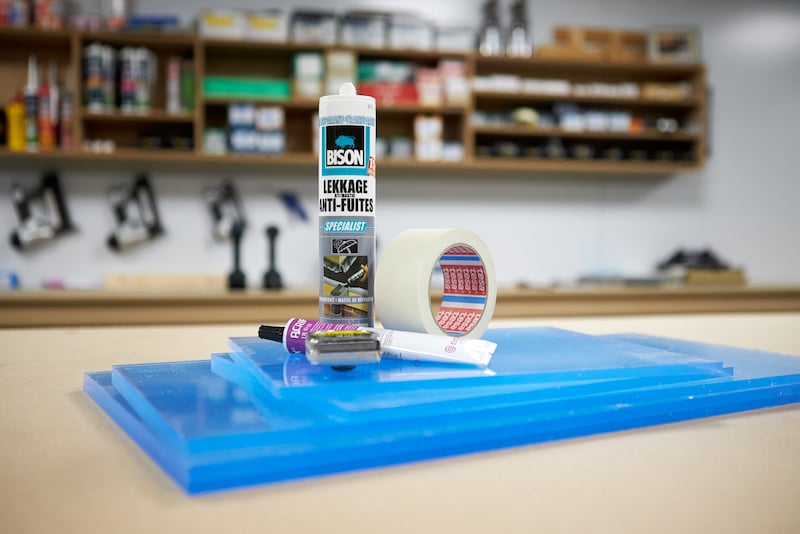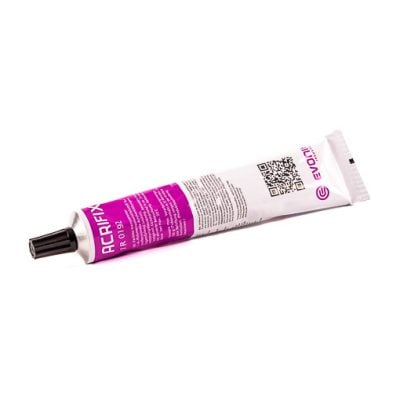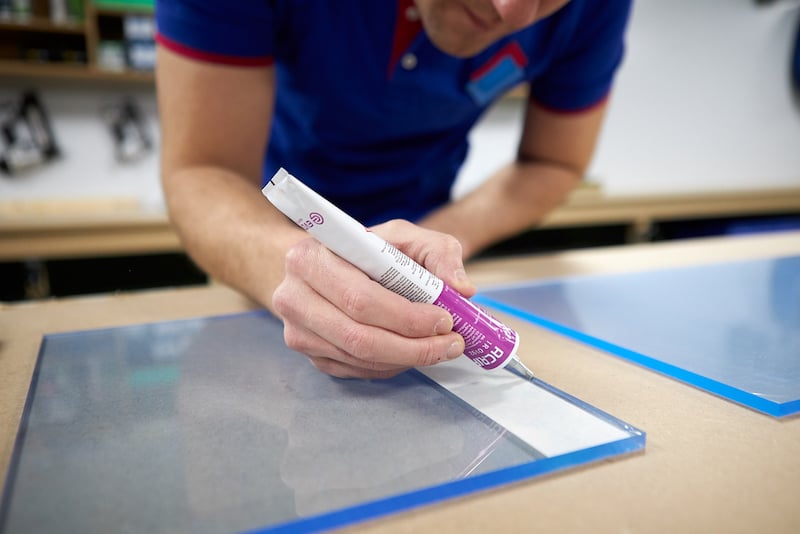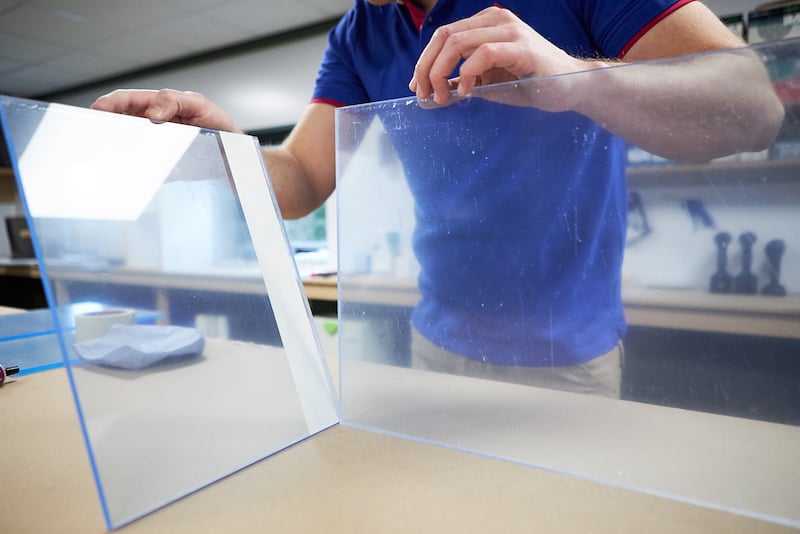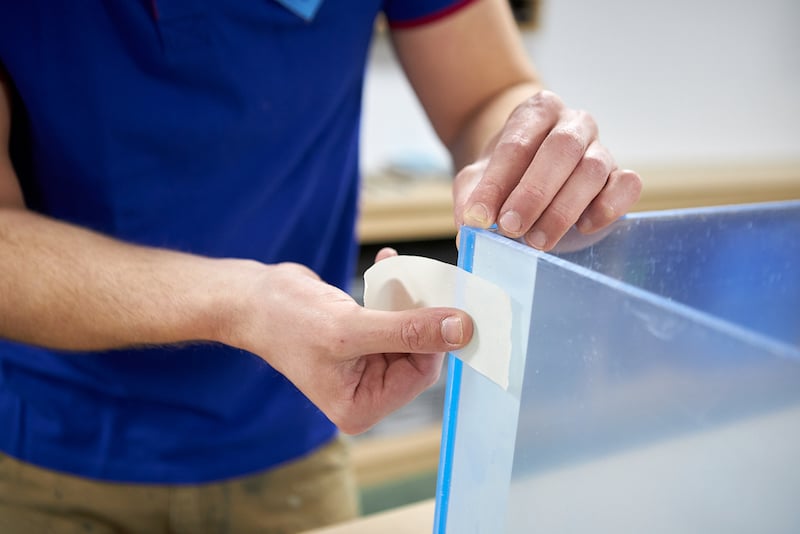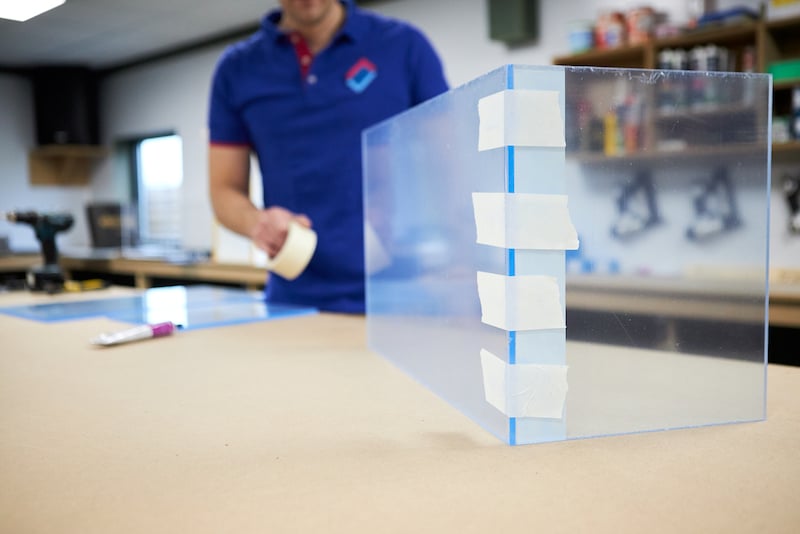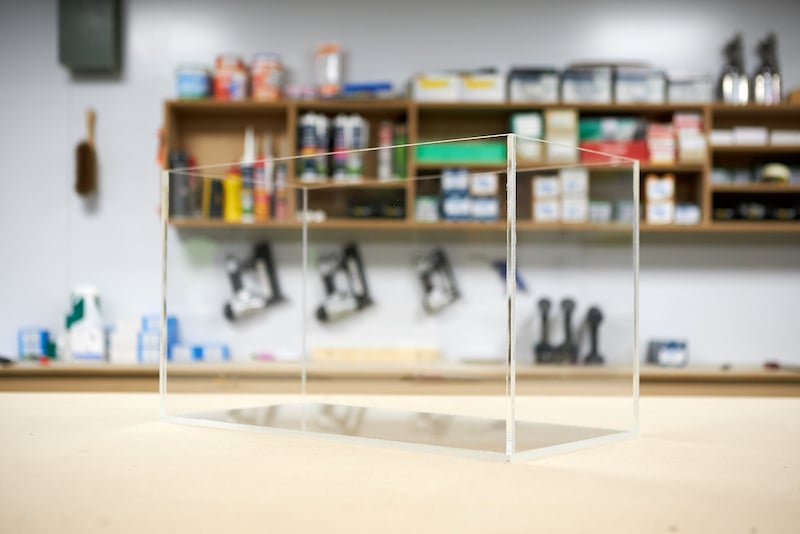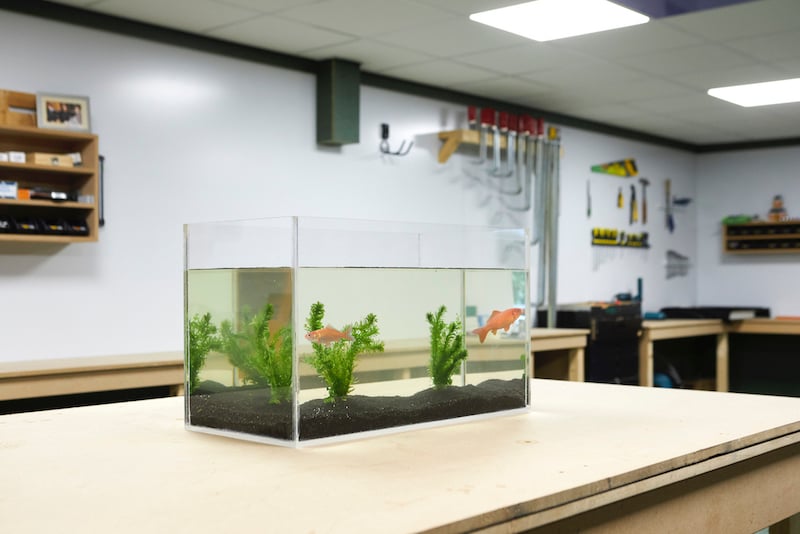Would you like to make a DIY acrylic aquarium, but don’t know where to start? First, decide on the material. Standard glass is fairly heavy: a 1-metre wide glass aquarium complete with water and fish weighs about 400 kilos. Acrylic sheet is both stronger and lighter than glass, it transmits more light and also has excellent insulation, so it’s the ideal material for an aquarium. Our DIY blog gives you step-by-step instructions on making an acrylic aquarium.
Before you begin making your acrylic aquarium…
A little preparation goes a long way when making an aquarium. First, read through all the instructions and work carefully, because the last thing you need is a flood on your living room floor!
You'll need:
The basis for making your DIY aquarium
In this DIY, we’re going to make an open acrylic aquarium with a volume of 63 litres. We’re using clear acrylic (cast) with a thickness of 8 mm. The measurements of the aquarium are 60 cm wide, 35 cm high and 30 cm deep. Naturally, you can adjust these dimensions to any size you like.
These are the dimensions of the acrylic sheets:
- Base: 1 clear acrylic sheet 8 mm 60 x 30 cm
- Sides (lengthwise): 2 x clear acrylic sheets 8 mm 60 x 35 cm cm
- End panels: 2 x clear acrylic sheets 8 mm 28.4 x 35 cm
Step 1: Decide on the size of your aquarium
Before you begin constructing your aquarium, think about its volume and measurements. As a general rule, the larger the tank, the thicker the acrylic. Always use moulded acrylic for an aquarium rather than the cheaper extruded acrylic sheet.
| Aquarium volume | Acrylic thickness |
| Tank up to 100 litres | Sheet thickness 8 mm |
| Tank up to 200 litres | Sheet thickness 10 mm |
| Tank over 200 litres | Sheet thickness 12 mm |
N.B.: Don’t forget to include the sheet thickness when planning your aquarium!
Step 2: Order the acrylic sheet for your DIY aquarium
After you’ve decided on the measurements of your acrylic aquarium, order the acrylic sheets. We cut the sheets to the exact size you require for free, using special cutting machines that ensure nice clean edges. These are ideal for glueing with Acrifix acrylic adhesive. Once your acrylic sheets have been delivered, you can start constructing your aquarium straight away. If you want a perfect finish, you can polish the visible edges on the front and back of the aquarium. Find out how to do this by reading our blog: Polishing acrylic.
Tip: Order your acrylic adhesive at the same time.
Step 3: Preventing marks on your aquarium acrylic
Place all the sheets on a flat surface, completely free of grease. It’s a good idea to place them on a soft, thin cloth to prevent scratches on the acrylic and to protect the table/workbench from any spilt glue. Remove the protective foil form one side of the base sheet and form the inside of one of the sides. Stick masking tape 8mm away from the edges that will be glued. Repeat this on all the sheets to stope the acrylic getting marked with excess glue.
Please note: when using Acrifix, never rub or wipe the glue! This will make a smudge on the acrylic that you’ll never get off. Just let the glue air dry. Watch the video below to see how to glue acrylic.
Step 4: Assembling your aquarium
Assemble your aquarium on a solid, flat surface. Use a spirit level and right-angle support blocks. You can also hold the sheets in position the sheets with masking tape, as we did in this example. We also recommend placing a thin, soft cloth on the surface so as not to scratch the acrylic and to prevent your workbench or table form any spilt glue. Place a support block on the bottom sheet and put on your vinyl gloves.
Make sure the surface is grease-free…
Before applying the Acrifix adhesive, the surface of the acrylic sheet must be clean and free of grease. Degrease the sheets using alcohol on a soft, lint-free cloth. Now apply the Acrifix glue to one side (the front side) of the base sheet. Then place the side panel against the base. Using the spirit level and the support blocks or by applying masking tape, fix the side panel to the base, so that it is perfectly perpendicular. Then allow the glue to cure for at least 20 minutes. Acrifix is a reaction glue that allows the edges of both sheets to dissolve and flow together.
After 20 minutes, carefully position the front or back wall. Apply the Acrifix on the front side of the side panel you just fixed, and along the front side of the base. Place the back wall against the side and base. Fix it using the support blocks and check whether it’s perpendicular. Fix the back wall with tape and align it against the side.
Wait another 20 minutes…
Wait another 20 minutes before positioning the remaining walls in the same way. You can install the last side and front wall at the same time. If you’ve aligned and levelled the first two sides properly, it will be easy to position and glue the last two walls. After this, you must wait 3 hours for the Acrifix to cure properly.
Step 5: Finishing the aquarium
Leave your aquarium to dry for about 6 hours. Seal the inside of the tank with a transparent sealant suitable for acrylic. After a further 24 hours, your new aquarium is finally ready to use.
Decorating your aquarium
As you can see, we’ve kept it simple in this example but you can get creative and decorate your aquarium as colourfully and dramatically as you like.
Adding an aquarium background
Make your DIY aquarium even more attractive by adding a background. The easiest way is to use a background poster. They’re easy to apply and you can change them as often as you like. You can make your aquarium background in various ways with styrofoam, plaster or resin. A background poster will add colour and give your fish tank the illusion of more depth. Read the instructions carefully and give your imagination free rein: a pirate shipwreck, a coral reef… it’s entirely up to you!
Cleaning your aquarium
It’s easy to clean the outside of your acrylic aquarium with Burnus anti-static cleaner and a microfibre cloth. An anti-static cleaner prevents scratches and ensures that dust doesn’t adhere to the acrylic. Clean the inside in the same way as an aquarium made of glass. Just be careful not to use metal or plastic razor blades because they’ll scratch the surface. While the aquarium is empty, you can also treat the interior with an anti-static cleaner. Rinse the tank thoroughly before refilling it.


